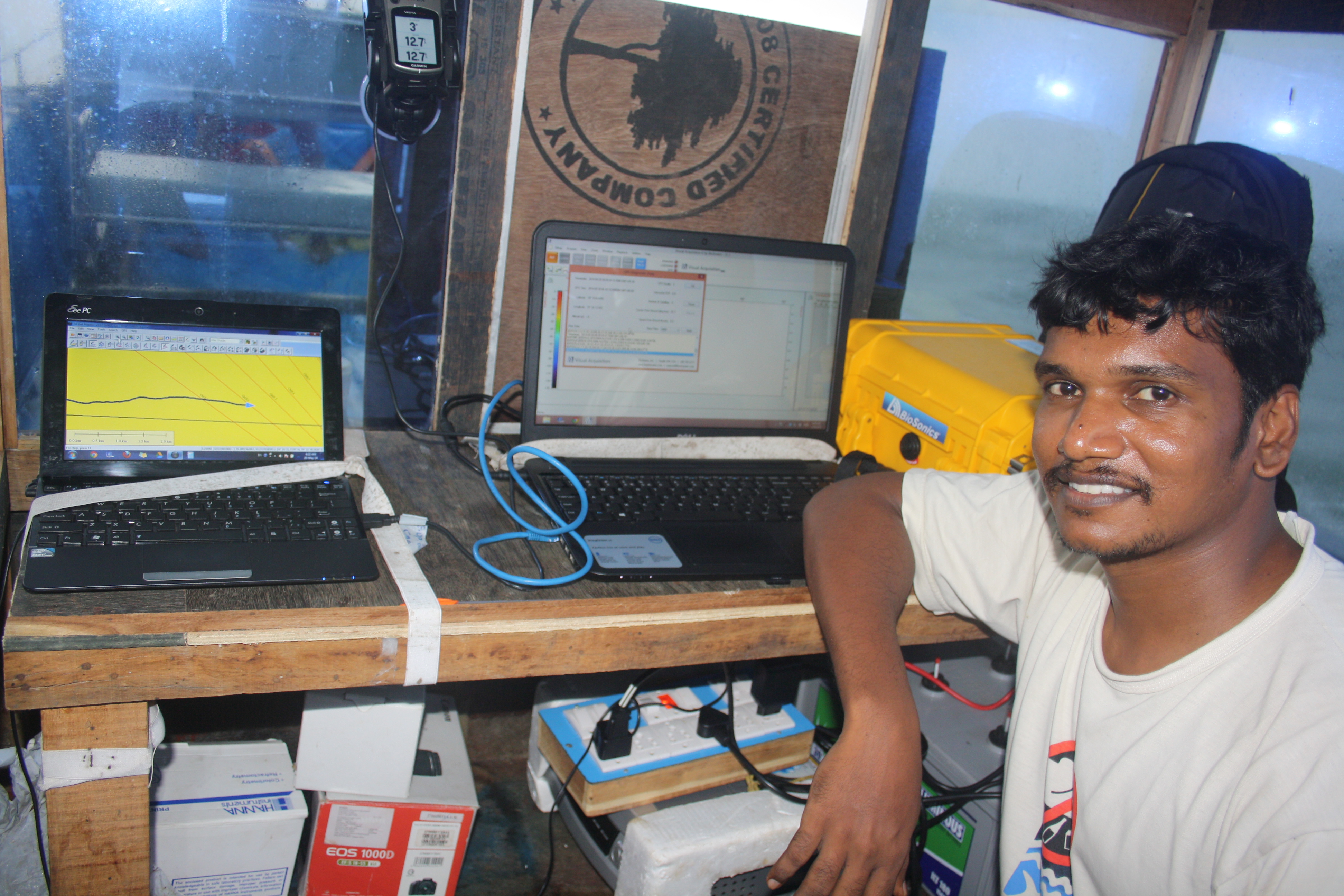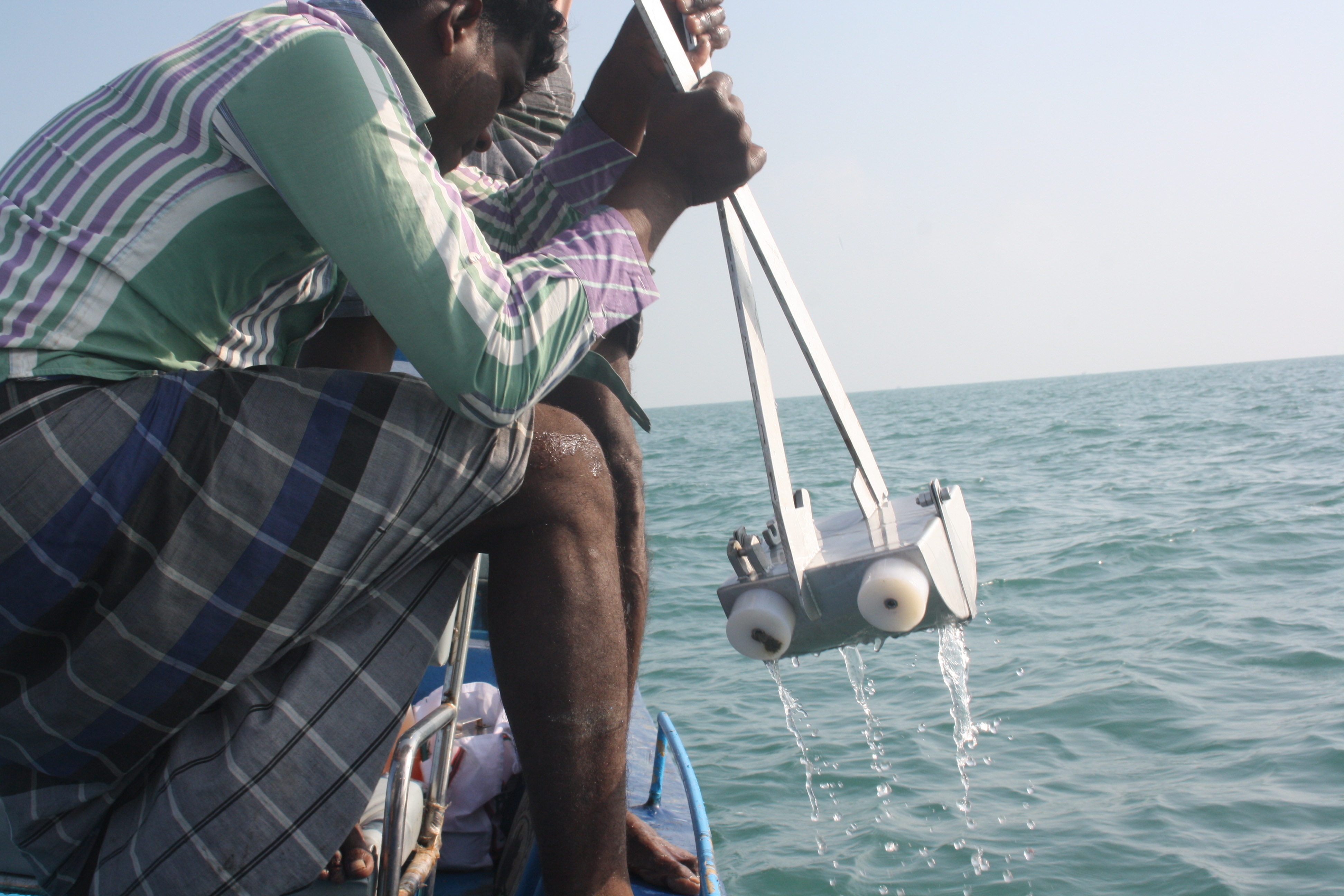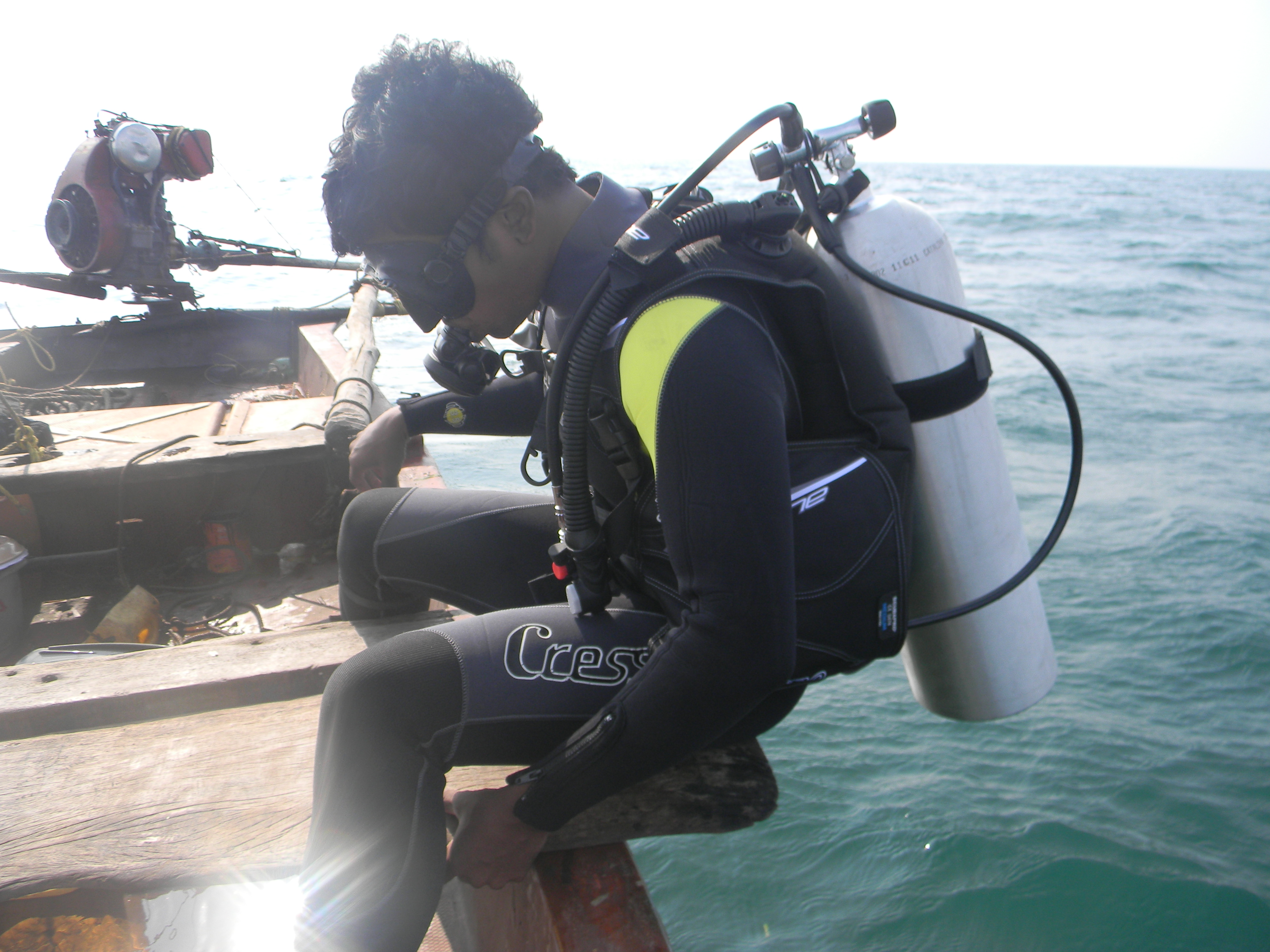



Before this survey, there was no accurate scientific data available about the extension of seagrass beds in northern Palk Bay. The preparation started in 2010, and the actual survey started in 2013 and was published in 2018. We had to come across issues related to funding, logistics, and how to build technical knowledge within our organization. Due to poor water quality, it was difficult to map the seagrass beds using satellite imagery. So, OMCAR built a survey boat (a modified fishing boat), developed skills in GIS and acoustic methods, and scuba equipment from 2010 to 2013. With the funding from NRDMS, DST, Government of India – OMCAR started to conduct the acoustic survey in shallow nearshore waters in northern Palk Bay for proposing the site as a conservation reserve. This was the first such attempt to survey the seagrass beds using acoustic technology in India. The final reports were submitted to Government and also published in 2018. This baseline survey revealed the distribution of seagrass beds in the ‘dugong conservation reserve’ up to 35,000 hectares of northern Palk Bay, so 500 square kilometers area in and around this seagrass bed has been selected to be declared as a” Dugong Conservation Reserve” based on this research by Government.
Our team consists of a marine biologist (founder of OMCAR), staff, and volunteers from the local community. This enabled us to plan for the seagrass survey methods using both scientific and traditional knowledge.
Low-cost navigational devices were assembled for this survey to navigate the boat perpendicular to the coast along the transects.
Local fishers who attended our capacity building training have helped with their traditional knowledge for planning suitable months and time to carry out the seagrass survey.
- Seagrass acoustic survey can provide accurate, local-based information about the distribution of seagrass meadows for conservation planning.
- Local people's participation and support are important, which will help for the safety of the survey crew, and the selection of suitable months and time for the survey.
- As the results are important as evidence to prove the total area of seagrass beds for declaring the protected site, technical knowledge, and dedicated staff are essential.
- Training and capacity building of local volunteers from the fishing community is important for participatory seagrass surveys.